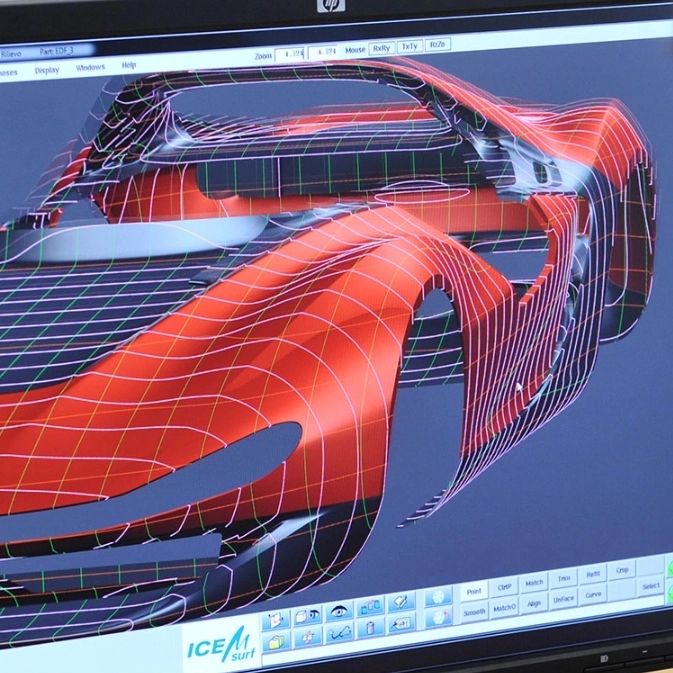We integrate all necessary aspects that contribute to a proper product development methodology, visualizing design projects with the highest standards of accuracy and quality.
Modelling in the design process
One of Pininfarina's key competencies lies in modeling, a crucial phase in the vehicle design process. Modeling involves creating physical or digital representations of a vehicle's design, allowing designers and engineers to visualize, refine, and validate the proposed design before production.
In the context of Pininfarina's work, modeling begins with sketches and conceptual projects. Designers translate ideas onto paper, capturing the essence of the vehicle's or object's aesthetics, proportions, and overall design language. These sketches are then refined and transformed into digital models using computer-aided design (CAD) software.
Once the initial digital models are created, Pininfarina's skilled modelers and engineers use advanced tools and technologies to further refine the designs. Computer Numerical Control (CNC) machines are often used to sculpt physical scale models using materials such as clay or foam. These models provide a tangible representation of the design, allowing designers to make critical evaluations of the vehicle's proportions and surface details.
Pininfarina places great emphasis on the precision and attention to detail required in modeling. Every curve, line, and surface is meticulously crafted to ensure it aligns with the design vision and functional requirements. Iterative feedback loops and adjustments are common during this stage to achieve the right balance between aesthetics, aerodynamics, and practicality.
With advancements in digital modeling, Pininfarina has also embraced virtual reality (VR) and augmented reality (AR) technologies. These tools enable immersive experiences, allowing designers, engineers, and clients to virtually enter and interact with virtual vehicle models, providing valuable feedback and enhancing collaboration.
Pininfarina's modeling process is a blend of creativity, technical expertise, and cutting-edge technology. It serves as a crucial bridge between design concepts and the final production of exceptional, aesthetically pleasing, and high-performance vehicles and objects that embody the legacy of innovation and elegance associated with the Pininfarina brand.
Applications
Automotive
In the automotive sector, modeling is a fundamental aspect of the vehicle development process. Pininfarina's designers commence with conceptual sketches, which are then transformed into detailed digital models using sophisticated CAD software. These digital models are subsequently translated into physical scale models using Computer Numerical Control (CNC) machines and other advanced techniques. The objective is to create prototypes that perfectly capture the elegance and desired performance for the vehicle.
Nautical
Pininfarina has applied its expertise in the art of design to create elegant and high-performing boats. Modeling in this context involves the creation of detailed physical and digital models of the boats, enabling the refinement of ae
Product & Experience
In product design, modeling is a key element in creating innovative and aesthetically appealing products. Pininfarina applies its expertise in modeling products such as furniture, consumer electronics, and more. Digital models and physical prototypes help refine every detail, from ergonomics to the arrangement of features, ensuring an optimal user experience.
Mobility & Transportation
In the context of mobility, which includes electric vehicles, bicycles, and scooters, Pininfarina is dedicated to cutting-edge projects that redefine urban mobility. Modeling plays a crucial role in creating integrated design solutions that blend style, functionality, and sustainability. Digital models allow for simulating user interaction with the vehicles and optimizing the ergonomics and efficiency of the design.

